




By lAurA FreemAn
A seismic shift in Birmingham’s healthcare market occurred last fall when Orlando Health offered to purchase Tenant’s 80 percent share of Baptist Health Systems, including five hospitals and related facilities. Now that the transition in leadership is well underway, how is the new culture and way of managing day to day operations affecting healthcare in central Alabama for patients and providers?
Thibaut van Marcke, president of the Alabama Region and vice president of Orlando Health, oversees operations in partnership with the Baptist Health System.
“When we were considering areas
(CONTINUED ON PAGE 6)

By lAuren Johnson
Surgical Institute of Alabama became the first facility in the state to obtain Zimmer Biomet’s new OrthoGrid equipment, and Scott Appell, MD completed a Total Hip Arthroplasty with the equipment in July.
After using OrthoGrid for over 15 surgeries to date, Appell has seen the benefits in the operating room.
“It makes it simpler and faster. It’s better for our patients, and it’s more efficient. This technology allows us to put
the hips in the exact position,” he said.
The OrthoGrid system uses AI to provide data and calculations in real time, giving surgeons the ability to put the cup and stem in the right position. This technology only needs to take a single x-ray in the operating room, which reduces the patient’s exposure to radiation and saves the surgeon time.
“I had been using another system where you had to take four to six different x-rays in the operating room, and there was a lag in between taking the x-
(CONTINUED ON PAGE 8)




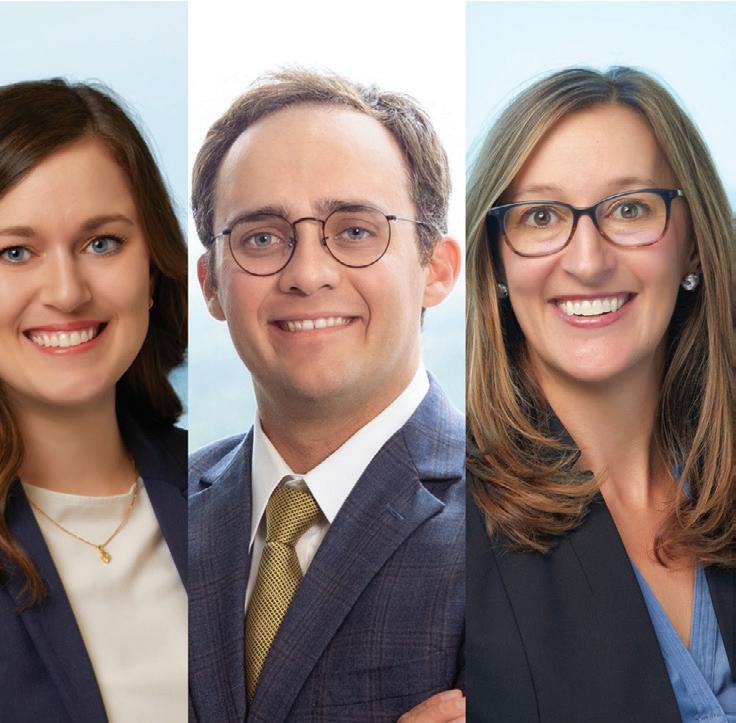


At the heart of one of the most highly regulated industries in the nation, health care facilities and providers face challenges that draw attention and resources away from their mission to provide quality patient care.
Burr & Forman’s health care team works alongside you to address and anticipate your needs by providing preventative guidance and pragmatic solutions, enabling you to focus on providing care and achieving healthy outcomes.
Alabama Health Care Team
Birmingham | Mobile | Montgomery
Jessie Bekker
Howard Bogard
Richard Brockman
Kelli Carpenter Fleming
Jim Hoover
Catherine “Cat” Kirkland
Garrett Lucey
Angie Cameron Smith

By steve spencer
A revolution has been unfolding in the corridors of UAB, one that promises to reshape how we understand and treat disease. At the heart of this transformation stands the field of genomics where researchers are unlocking the secrets hidden within our DNA to bring hope to patients. Advances in the field are spurring a shift in medical thinking, moving from reactive treatment to predictive, personalized care.
“Genomic information can be used to help patients in a variety of diseases,” said Bruce Korf, MD, PhD, Professor Emeritus at UAB Genomics. “For instance, there are rare diseases that individually affect small numbers of people, while on the other hand, there are common conditions like diabetes and cancer, all of which have a genetic contribution.

“In the common disorders, the ability of genomics now to identify individuals who are at risk is rapidly improving to a point where we can imagine testing individuals who, at the point of testing, don’t have signs or symptoms, and we might see that their risk is increased and we would implement strategies to reduce that risk.”
Cancer, the second leading cause of death in American, is fundamentally a genetic condition. But the genesis of every cancer is the accumulation of genetic changes in the tissues that render those tissues exempt from normal controls on cell division. And categorizing the various genetic changes in these cancers is improving clinicians’ ability to customize treatment to the individual.
In the case of rare disorders, the contribution of genomics has been dramatic. For example, researchers have identified genetic modifiers that can affect the severity of sickle cell disease and are explor-






ing the potential of gene editing therapies to correct the mutated gene in hematopoietic stem cells.
Likewise, genomics has made substantive improvements in autism spectrum disorder diagnosis. The field has witnessed a transformation from a time when establishing a diagnosis was possible in only 10 percent of cases to today’s reality where diagnostic rates exceed 30 percent.
“Now we have the ability to sequence the entire complement of genes, over 20,000,000 genes, and for that matter, all the DNA in the genome. And through that, we can identify genetic conditions that we previously didn’t even know existed,” Korf said.
The collaborative nature of modern genomic research has created unexpected connections across continents. Through systems like GeneMatcher, researchers can share findings globally, leading to remarkable discoveries about rare genetic conditions.
“We had an example of a genetic condition a while back now where we found something that was pretty obscure, put it into GeneMatcher,” Korf said. “Somebody in Germany turned out to
have a very similar genetic change in the same gene. And when we compared their pictures, they looked so much alike that they could have been brothers. This kind of phenomenon is happening around the world.”
The practical applications of genomics extend beyond diagnosis to treatment and prevention. The state-supported Alabama Genomic Health Initiative identifies individuals at risk for various cancers and heart diseases, enabling intervention strategies that can prevent disease development or catch it in its earliest, most treatable stages.
“With cancer, as we categorize the different genetic changes that are driving a tumor, it reveals instances where there are drugs that you wouldn’t have thought of using that actually can make a huge difference in treating that cancer. And this is pervading all areas of medicine,” Korf said.
UAB is making an effort to expand personalized medicine, and genomics is a big part of that. “Dr. Nita Limdi, who manages the Alabama Genomic Health Initiative, has worked with her staff to do a pharmacogenetic analysis to identify






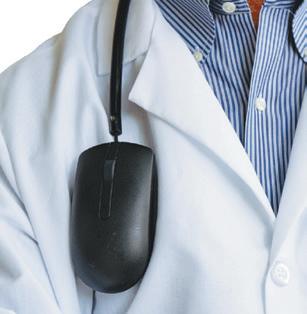







within 2-4 weeks of referral
• We keep you informed about the patients’ treatment plan
• We make sure the loop is closed on your referral

By Ansley FrAnco
Tumors of the brain and spine often go undetected until symptoms become difficult to ignore. But for University of Alabama at Birmingham neurosurgeon Phillip Cezayirli, MD the story often begins with something as routine as a headache. It ends with an MRI revealing a far more serious concern.
“The most common brain and spine tumors we see in our practice are metastatic,” he said, referring to tumors that originate in other parts of the body— often the lungs, breasts, or kidneys—and migrate to the brain or spine. Primary tumors, like meningiomas, gliomas, schwannomas, and pituitary tumors, are also common, though many are discovered incidentally.
“Someone has a headache, and they finally get imaging, typically a CT scan first, and then usually an MRI after, and they find that they have a tumor,” Cezayirli said.
One reason for the increase in incidental findings is that imaging itself has improved drastically. CT and MRI scans now offer ultra-high resolution, down to 0.1 millimeters, or about 100 microns, which approaches the size of a single cell.

Imaging technology has advanced to the point where the goal is no longer to see below 100 microns. The challenge now is waiting for screen resolution to catch up so that those details can be displayed.
Another update in software is NeuroQuant. This technology utilizes AI to segment the brain and track changes in volume over time. It was originally developed for Alzheimer’s, but is now used to detect and monitor brain tumors. Other platforms like Vis.AI and Rapid.AI can do similar work for lung and brain CT scans to flag subtle lesions that might be overlooked by the human eye.
“Artificial intelligence and machine
learning are getting so good that they can alert us to a lesion that maybe we didn’t know about or see,” Cezayirli said.
Improved detection is only a portion of the advances in care that tumor patients can receive. Once a tumor is discovered, newer treatment options are expanding what’s possible for people, often without invasive surgery.
Among the biggest breakthroughs are ipilimumab plus nivolumab, also known as ipi-nivo. These are types of targeted immunotherapy that work by blocking certain proteins and help your immune system find and kill cancer. The combination has shown success in treating metastatic melanoma brain tumors.
Surgical approaches are evolving, as well. Laser interstitial thermal therapy (LITT) is a minimally invasive procedure that uses a small needle probe to heat and destroy tumors deep in the brain. The incision is so small that patients often heal quickly and can begin chemotherapy or radiation much sooner.
“The thought is you can do a biopsy at the same time with the LITT. Since it’s such a tiny incision, it heals fast. The odds of having issues from that are fairly low, so they can get the radiation and chemotherapy much faster. Soon they could use
it for spine tumors, as well,” Cezayirli said.
In other cases, intraoperative radiation therapy (IORT) is being used for brain and spine tumors. This method allows radiation to be delivered during surgery, directly into the tumor site. “You remove the tumor and you put the radiation in, but the radiation is so minimal that only the area that you want to treat gets radiation,” Cezayirli said.
For patients undergoing tumor resection, GammaTiles, which are small radiation-emitting implants, can be left in the brain after surgery to continue treating the area over the following weeks.
“It allows us to put one-by-one centimeter and two-by-two centimeter pledges into the area of the tumor we resected. We leave it in there and it produces radiation over the next few weeks, and we do that at the end of the resection,” Cezayirli said. “These allow people to get the radiation faster, rather than having to wait for them to heal after resection. They’re working on implications beyond the brain.”
Sharper scans, smarter software and more targeted therapies have introduced a new wave of care for the outcome of patients’ who are diagnosed with brain and spine tumors.

By Ansley FrAnco
Patients with advanced melanoma now have a new option at the University of Alabama Birmingham, one that boosts their immune system to fight cancer. Tumor-infiltrating lymphocyte therapy (TIL) is a promising form of immunotherapy that harnesses and multiplies a patient’s cancer-fighting cells, then reintroduces them into the body to target tumors more aggressively.
A team of surgeons, medical oncologists, nurses, and social workers are leading the launch of the treatment at UAB, making it the only center in Alabama currently offering TIL therapy.
“I think of it as creating a supercharged cocktail of immune cells that are based on the patient’s actual tumor, which are infused into the patient to stimulate the immune system to treat the melanoma,” UAB surgical oncologist Kristy Broman, MD said.
The therapy begins in the operating room when a surgeon removes or harvests a viable section of the tumor, one that has sufficient volume that can increase the likelihood that the lymphocytes will grow.
“Melanoma can happen anywhere

in the body, and when it’s metastatic, it can be anywhere in the body. So we can harvest from anywhere,” Broman said.
“I’m always thinking: What is the lowest risk thing that I can do to harvest the tissue to enable the patient to recover and be ready for the next step, which is chemotherapy followed by the TIL infusion.”
After it’s been harvested, the sample is then shipped to a lab in Philadelphia, where the tumor sample is broken down and the immune cells are expanded over several weeks. Once ready, the cells are returned to UAB for re-infusion.
Before receiving the TIL infusion, patients undergo chemotherapy to sup-

press their existing immune system and make room for the incoming expanded lymphocytes. The actual infusion is administered intravenously during a weekslong hospital stay.
“It’s not personalized medicine, it’s tumor-specific medicine, which is kind of cool,” Broman said. “The nice thing is that we’re seeing really good response rates, even in people who have not responded to other standard treatments, including other forms of immunotherapy. So it gives us a lot of hope to have another trick up our sleeve for those people for whom those standard immune therapies aren’t effective or their tumor be-
comes refractory.”
TIL therapy was FDA-approved in February 2024 for use in patients with metastatic melanoma who have stopped responding to standard immunotherapy drugs, like Keytruda or OPDIVO.
“This is the next step in harnessing the immune system’s power to attack the cancer,” UAB medical oncologist John Dubay, MD said. “With our current treatments, most patients will eventually progress on the treatment. This gives us a new option once they have progressed on our standard immunotherapy to have another treatment option.”
Ideal candidates are patients with metastatic melanoma who are still relatively healthy, and whose disease is progressing slowly. This is because the process of harvesting and reintroducing cells takes five to six weeks.
“We appreciate that the logistics of coming to Birmingham for care are challenging for a large proportion of our population who live far away, may not have a ton of resources for transportation, getting off work and those sorts of things,” Broman said. “Our navigators and social workers are critical members of our team
If you’re searching for new revenue sources to strengthen your practice, it’s time to partner with Seven Corners Healthcare, the largest third-party administrator of federal inmate healthcare in the country. Join our network for:


Competitive reimbursement rates
No patient copays for deductibles to pursue

Expanded revenue through a range of specialties, including orthopedics, podiatry, gastroenterology and more



that might be a good fit for expansion, there were several factors that made Alabama a strong possibility,” van Marcke said. “First, the Birmingham area is known for excellence in medical research and care. It has the depth and breadth of expertise that will allow us to offer the top-tier quality of care we envision. As a nonprofit, we answer first to our patients.
“Geography was also a factor. While having similarities with our home base in Florida, central Alabama isn’t as subject to the risks from hurricanes as our hospitals near Orlando and in Puerto Rico are. That’s a plus for the security of the overall company.
“Most of all, we saw a great potential to take the system from where it currently was to where it could be. Several things had been on hold a while that could take the system to the next level with a little attention.”
When their offer was accepted, the new leadership set to work making reality match the identity they envisioned for Baptist Health.
“When people see the words ‘Baptist Health,’ we want them to expect the very best in quality health care,” van Marcke said. “The first step in meeting those expectations was addressing infrastructure. In some places, it could be as simple as fresh paint and new fur-
continued from page 1
nishings. Other areas might involve structural repairs or renovation of parking decks. Some fixtures needed to be replaced and some equipment needed to be updated to current standards. To tie it all together, we needed to replace signage throughout the system to achieve one unified image that would become immediately recognizable.”

With infrastructure renovations underway and a plan for future improvements in place, the next step was reaching out to providers who refer patients to the hospitals and perform procedures there.
“We wanted to leverage the strength and synergy of cobranding by partnering with providers who share our vision. That meant supporting them and doing whatever we could to see that they had the resources they need to deliver the best care they are capable of providing,” van Marcke said.
The new leadership also believes in the value of shared expertise. When Orlando Health was offering a seminar on
new developments in cardiac care for primary physicians in the Orlando area, it brought in speakers from the Birmingham office of Baptist Health Cardiovascular Associates. When Birmingham hosts seminars here, it can call on experts from other facilities managed by the group.
Orlando Health believes in having accessible care in the communities they serve. “We support providers who are establishing offices in outlying communities so people don’t have to travel great distances to get state-of-the-art care,” van Marcke said. “Each community has subtle differences in culture, environment, work, socioeconomics and health habits. Different populations may have a different prevalence of some diseases or different customs related to families, aging and how they interact with the healthcare system. Providers who work with these patients are in a better position to understand local needs. We want to partner with them to give all our patients the best care possible near where they live.”
Access to care in local communities also improves the odds that patients will seek medical help earlier in the course of a condition when a good outcome is still possible and easier to achieve.
van Marcke sees a lot of work ahead in the next few years, along with exciting new plans that will be taking shape along the way. He has been very pleased with the response he has received from new colleagues, the hospitals and the community.
“Everyone has been so warm and welcoming,” he said. “When we explain what we want to achieve, people seem excited to be part of it.”
Founded more than a century ago, Orlando Health is a private, not-forprofit network of hospitals and health care facilities across central Florida, Puerto Rico and now Alabama.
Baptist Health in central Alabama includes the five hospitals along with numerous cobranded primary and specialty care facilities. Baptist Health Brookwood, Baptist Health Princeton, Baptist Health Shelby, Baptist Health Walker and Baptist Health Citizens Hospitals are all sharing the new Baptist Health signage that will soon become familiar across the area.


rays and the computer looking through the information,” Appell said. “A lot of it depended on the position of the x-rays, and you had to be finicky about that. OrthoGrid is one shot and it’s done.”
A representative for Zimmer Biomet said: “OrthoGrid takes a 2D image, and through AI and with proprietary software, it reconstructs these 2D images taken via C-arm in the OR. Then it constructs a 3D image that guides the surgeon to put the components exactly where they need to be.”
One of the biggest complications surgeons have seen with hip replacement surgery is the instability of the joint. In the past, patients were at risk of dislocating their hips until all the tissue healed and matured.
“It all has to do with how the hip joint was put in,” Appell said. “You have to put the socket and the ball in exactly the right geometry and position. The technologies that we have now allow us to do that, do it accurately and do that in real time, so we have stable hips. It makes it a much better procedure than it was 15 or 20 years ago.”
Total hip replacement surgery was popularized in the 1960s by an orthopedic surgeon named John Charnley. His technique was widely accepted because of the successful patient outcomes.
“Everyone was learning how to do

it like Dr. Charnley, and that was using a posterior approach, which means you have to go through the gluteus muscles,” Appell said. “With this approach, it took patients a little while before they could walk and recover, which was an obvious shortcoming to this procedure.”
When Appell first started performing hip replacement surgery, patients stayed in the hospital for two weeks. After he finished his residency in 1992, he continued to see new improvements that refined the surgery. Over time, surgeons began adopting the anterior approach, which allows them to make smaller incisions and avoid the need to cut any muscles which allows for quicker rehabilitation time.
Today, the surgery is completely an
outpatient procedure. With the help of robotics and now AI technology like OrthoGrid, the surgery only takes 30 minutes and patients go home afterwards.
The most common cause for malpractice against hip surgeons has been leg length discrepancies, where surgeons decided to put the hip in a little longer for stability. Now, with the anterior approach and with the help of technology, like OrthoGrid, surgeons can be confident that patients’ legs are the same length, and the hips will be stable.
“Part of Surgical Institute of Alabama’s mission is to be leading in all the things that will improve patient outcomes – everything related to making sure our patients are getting the absolute best
care,” Appell said. “We’re focused on providing the best experience, and that means a phenomenal outcome. This is just one more thing that allows us to advance that.”
Using OrthoGrid means more accuracy, less radiation, lower cost and less trauma during surgery.
“It’s exciting, as somebody who’s been doing this for 20-plus years, to see the evolution of how much we had to go through to get the data we’re now getting in seconds,” said the Zimmer Biomet representative. “We’ve gone from patients staying multiple days in the hospital to artificial intelligence robotics and people going home the same day.”












By steve spencer
In a quiet clinic at Children’s of Alabama, something remarkable is happening. Children who once struggled with uncontrollable tics—shoulder shrugs, throat clearing, eye blinking—are learning to take back control of their bodies through an innovative behavioral therapy that’s changing lives one session at a time.
Jan Rowe, Dr. OT had spent 25 years on the faculty at UAB when she learned about a new treatment approach for Tourette Syndrome and other tic disorders, and in 2010 she established the first OTmanaged clinic utilizing Comprehensive
Behavioral Interventions for Tics (CBIT).
Today she runs one of only 27 specialized clinics in the United States at the Tourette Syndrome Center of Excellence, located at Children’s of Alabama, where they draw patients from across the southeastern United States and even as far away as Indonesia, Turkey, and Japan.
“Tics are non-rhythmic movements or sounds that occur as a result of the brain sending basic signals to a person,”
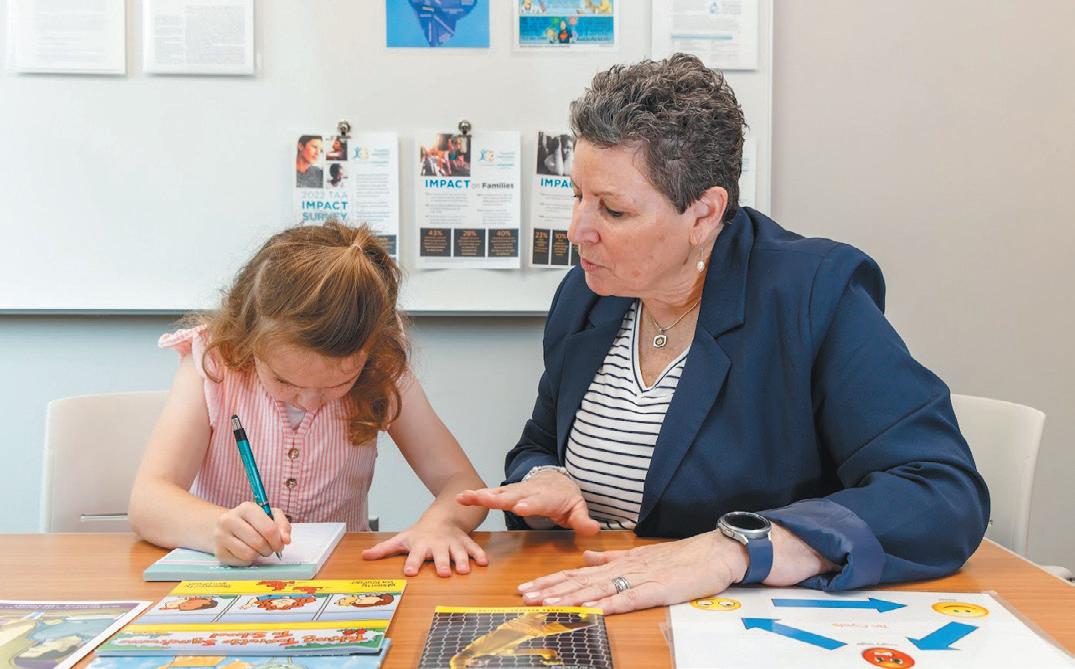
Rowe said. “They’re usually preceded by what we call a premonitory urge. It’s something that you feel or sense.”
The science behind tics reveals a fascinating neurological process. For most people, the brain acts as a gatekeeper, filtering out unnecessary impulses. But for those with tic disorders, the neural gatekeepers aren’t as effective.
“With people who have tics, those gatekeepers don’t keep the signal from



UAB Medical West is thrilled to welcome Dr. Erin Hall-Minnie to our team of OB/GYN physicians. Dr. Hall-Minnie received her undergraduate degree from Baylor University and her medical degree from The University of Arkansas. She completed her residency at Texas A&M. Dr. HallMinnie is board-certified in Obstetrics & Gynecology. To schedule an appointment, call UAB Medical West OB/GYN at (205) 481-7750.
passing through. The urge that they feel is so strong that they can’t stop themselves from doing it,” Rowe said. When someone performs a tic, they experience relief due to a dopamine rush, which then perpetuates the cycle.
The statistics are staggering: one in five school-aged children have tics, and one in 100 have Tourette syndrome. While Tourette’s does involve tics, to be diagnosed with it, a person has to have at
least two motor or physical tics and one vocal tic over the course of a year, be less than 18 years old, and not have had any kind of head trauma.
The traditional approach to treating tic disorders has relied on pharmaceuticals, often with limited success and significant side effects. These medications can cause weight gain in children, sometimes making them targets for the very bullying their tics had already exposed them to.
By contrast, there are no side effects with the CBIT program, which relies on behavioral therapy. “We’ve had so much success with our CBIT program that it’s as effective, if not more effective than medications,” Rowe said.
CBIT is an evidence-based therapy with an approach that is simple, yet profoundly effective. “We teach them what we call a competing response, where we do something that’s opposite of the tic,” she said. “If you have a shoulder shrug, where you’re pulling your shoulder up toward your ear, then we’re going to do the opposite. When you feel that shoulder shrug about to happen, push your shoulder down and hold it.”
The competing response must be undetectable to others and sustainable for

At the UAB Medical West Women’s Center, we provide pregnancy care and delivery services. Whether you’re experiencing a normal or high-risk pre the technology and medical expertise to provide you with outsta childbirth. Our team of women’s health specialists consists of qualified obstetricians, family practice doctors, labor and delivery professionals, boar gynecologists, neonatologists, and anesthesiologists. Our labor and delivery nurses will be with you every step of th compassion, support, and expertise. We have a 1:1 nurse-to-patient ratio. While in labor, you can be assured that our nurses will tend to the needs of you and your baby
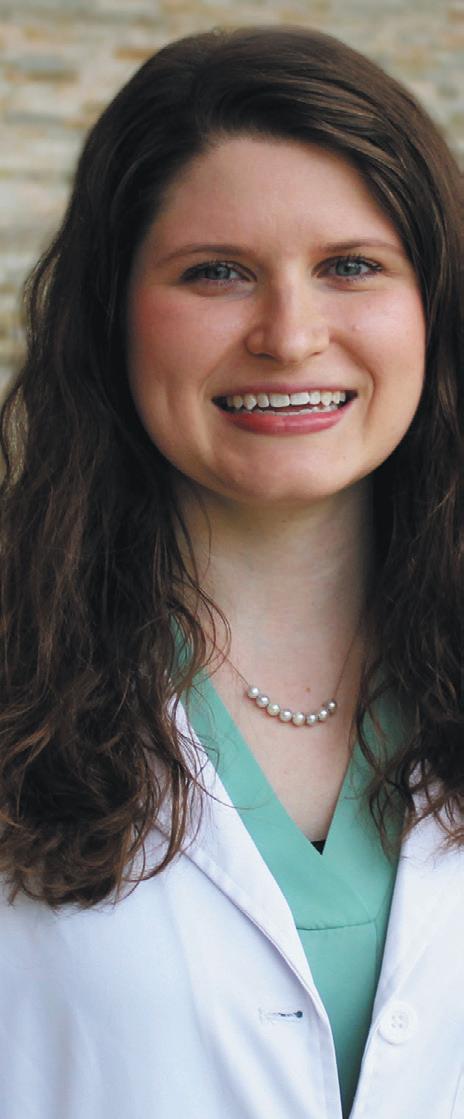





By lAurA FreemAn
In a time when budget cuts are making research dollars more difficult to find, it isn’t unreasonable to be concerned that those who aren’t versed in the value of basic science may think they are trimming the fat only to find out later they are cutting into the muscle and beating heart that powers our economy.
The vitality of basic and applied science in Alabama is a powerhouse for both the state and national economy. In Birmingham, this is especially true of medical research. One vivid example of basic research that is unlocking a cascade of opportunities is the discovery and development of the MspA channel protein by UAB microbiologist Michael Niederweis, PhD.
The journey that began with basic research into mycobacteria led to the discovery of the MspA channel protein that forms an unusual funnel-shaped nanopore.
“As other researchers learned about the nanopore and its properties, they contacted me with questions about possible applications,” Niederweis said. “One researcher in Seattle was working on a new, much faster and far less expensive way

to sequence DNA. He wanted to know whether the nanopore might be suitable for a technique he was exploring.
“At first, the answer was no. The charge on the nanopore would repel the DNA nucleotides. But his question started me thinking about ways to reverse the charge. That collaboration led to a joint patent for the technique which uses a simple hand-held device that should soon revolutionize DNA sequencing and

can also be used to learn more about many different diseases.”
Recognized as Method of The Year in 2022 by New Methods, the technique sends a single strand of DNA through the nanopore while measuring ionic changes. These changes essentially spell out the sequence. It can be used to examine a long strand so that multiple points can be reviewed.
Niederweis is now launching a new
research effort in collaboration with UAB cancer researchers using the same approach to get at the basics of what is going on in pancreatic cancer. The technique could unlock a better understanding of many different diseases, making them easier to target. The economic impact, not only in the rollout of the new technology itself, but also in the potential savings in healthcare costs, lives and relieving of human suffering is enormous.
This is why Niederweis has been asked by those in charge of federal research funding to write a summary of how his work in basic research is leading to a much broader economic impact.
Another example of how answering basic questions can improve the odds for success in other research and lead to a significant economic and human impact is the work that led to the invention of the darkness adaptometer by UAB Marnix E. Heersink School of Medicine ophthalmology professor Cynthia Owsley, PhD. Both Owsley, who has 11 U.S. patents, and Niederweis, who has 12, were recently named as fellows by the National Academy of Inventors in recognition of their work.













Owsley’s darkness adaptometer arose in answer to the basic questions of “how long does it take the eye to recover night vision after being exposed to a bright light?” How long is longer than normal, and can a longer recovery time be a measurable way to predict macular degeneration or set a baseline to monitor its progress?

“Originally with the help of my team, I wanted to invent a tool that could be used in research to find early treatments to prevent or delay the progression of macular degeneration,” Owsley said. “One of the essential problems was identifying who was likely to develop the condition, and then we needed a reliable method to track whether potential treatments were working.”
In aging, Americans are at greater risk of developing macular degeneration than Alzheimer’s. It’s the leading cause of blindness in older populations. Until recently, most research has been focused on mitigating the impact of the disease in later stages. Now work has begun on recognizing the disease early and finding ways to intervene before the damage is done.
“We started with a common symptom we see in macular degeneration—difficulty seeing at night,” Owsley said. “That’s one reason so many older adults have to give up driving after sunset, which can be limiting to quality of life. The darkness adaptometer shines a bright light into the eyes and measures the amount of time till night vision recovers.”
After proving its accuracy and effectiveness, it was patented then brought to market as a tool that has a multiplier effect by enabling additional layer of research that could have an economic impact that goes well beyond the sales of the device itself. There is also the value of the new medications and devices it makes possible as well as the additional years of productivity and quality of life in patients who will continue to see.
In weighing the wisdom of budget priorities, the U.S. would do well to keep a familiar fable in mind. When your goose is laying golden eggs, the smart money is on staying away from chopping blocks.
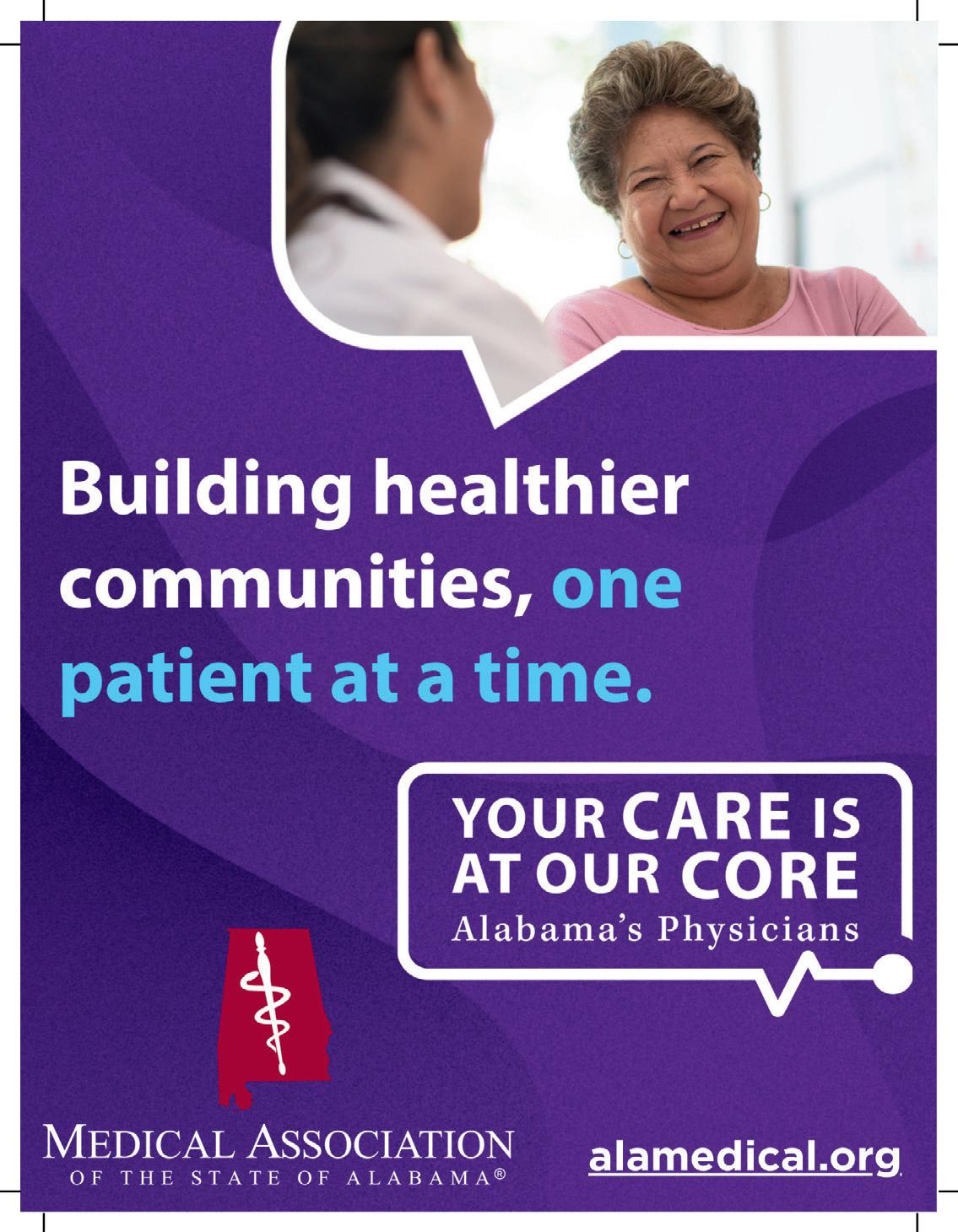









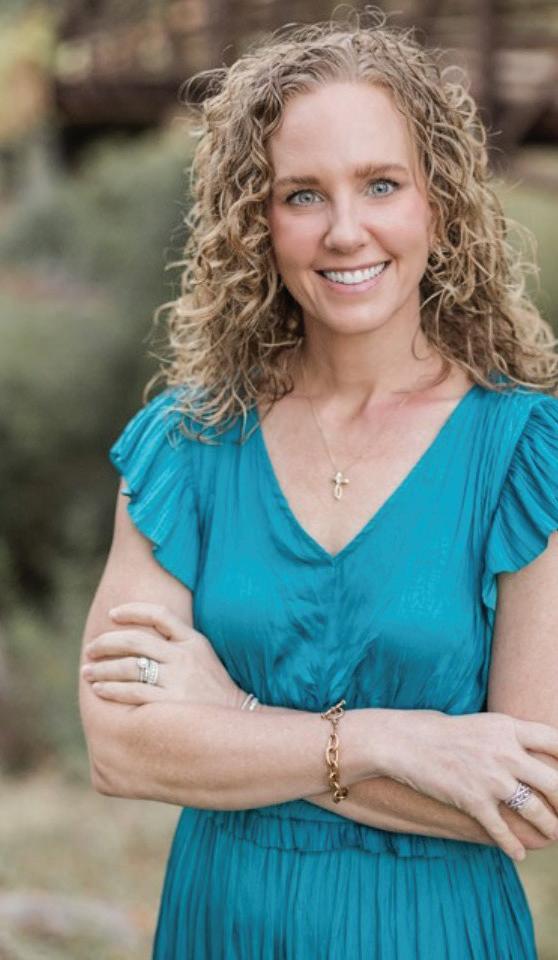



At our specialized facility, we empower your patients to take control of their health. Through our ADA-certified comprehensive program, we address not just the medical aspects of their diabetes management, but also the practical, day-to-day challenges that your patients face.

continued from page 3
genes that influence the way individuals metabolize drugs. They want to identify instances where you can avoid side effects and maximize the likelihood of benefit by matching the individual’s genetic profile to the medications they need to be on. She’s also involved in a National Institutes of Health program to test the ability to do genetic analysis to identify individuals at risk for a variety of common disorders and incorporate that into primary care,” Korf said.
The challenge ahead lies not in the technology itself, but in seamlessly incorporating these powerful tools into everyday medical practice. Most physicians today were trained before the genomic
era, creating an educational gap that the medical community is working to bridge.
“As the use of these approaches increases over the coming decade, I think they will get blended into the fabric of day-to-day medical practice,” Korf said. “Medical providers will need to know when to use it and how it can influence decision-making. Our goal now is to make its integration as seamless as possible into the workflow of health care.”
As genomic medicine continues its rapid evolution, the ultimate goal remains clear: transforming the wealth of genetic information into better health outcomes for patients, one DNA sequence at a time.
continued from page 5
therapy, Dubay said that UAB hopes to become a regional hub.

• Comprehensive diabetes assessment
• Individualized treatment
• Continuous glucose monitoring
• Insulin pump management
• Nutritional counseling & meal planning
• Diabetes self-management support
• Follow-up care & monitoring

• Support groups for patients & families



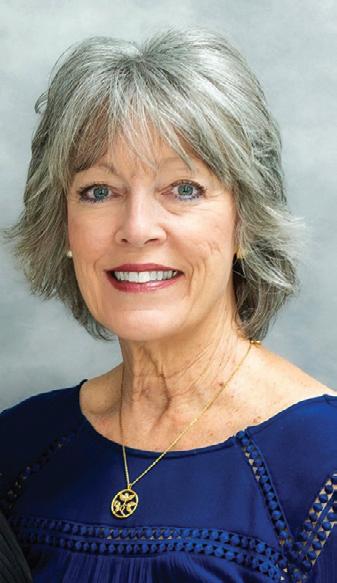
Nikki Hooker, LPN Morgan McHugh, CRNP Debbie Morrison, MS, RD, LD

who work tirelessly to address many of the barriers to receiving such an intensive treatment.”
Although UAB’s TIL therapy program launched only recently, it is ramping up quickly. The team first gained experience through a clinical trial, which provided valuable experience for implementing the treatment. While other institutions in the Southeast offer TIL
“I expect to see improvements in the procedure in terms of making it more effective by adding additional drugs or whatever needs to be done. Then, I think it’s going to be used in other cancers,” Dubay said. “It’s been studied in several others, including lung cancer, which would be a huge population.”
continued from page 9
up to a minute or longer, until the urge subsides. Patients practice this technique throughout their day—at school, home, restaurants, anywhere tics might occur. The brain adapts to these new response patterns, as evidenced by MRI studies that have shown changes in neural pathways.
“The tics usually stop in five to seven days,” Rowe said. “Of course, every patient is different. I might see a patient for three or four weeks, and then maybe check out with them a month later, just to make sure they’re still good.
“We like to get them started in CBIT therapy early if it’s causing them any distress. When we have a little bit of distress registered by the child, they’re the perfect candidate for the CBIT therapy because they’re motivated to fix it.”
Rowe’s work also involves education for families grappling with misconceptions about Tourette syndrome. “Sometimes when the child is diag-
nosed, and parents hear the word ‘Tourette’s,’ they feel like their world has stopped,” she said. “People with tics and Tourette have average to above average intelligence. There’s no reason for parents or anyone else to think that they’re not going to do well.”
The clinic’s success rate speaks volumes: 85 to 95 percent of patients experience improvement.
For the small percentage with intractable tics who don’t respond fully to CBIT, options like deep brain stimulation exist, and it’s been successful, although this is usually a last resort because it requires surgery.
As children work through the CBIT program, Rowe emphasizes that this isn’t a cure, but rather a powerful management tool. “But,” she said, “there are very few things in life that you get these kind of results with. So if the child and family are willing, they absolutely will get success.”
By: mAtthew scully
Employee leave management has become an increasingly complex aspect of human resources, requiring a solid understanding of intersecting federal laws and company policies. From accommodating medical needs to maintaining operational continuity, employers must navigate leave issues with care, consistency, and legal awareness.
This article provides a high-level overview of key leave laws and best practices for managing employee absences in a compliant and fair manner.
Several laws govern employee leave and accommodations, often overlapping in their application. Employers must be aware of their obligations under each to avoid legal risks and support employee well-being.
The ADA requires employers with 15 or more employees to provide reasonable accommodations to qualified employees with disabilities, unless doing so causes undue hardship. A disability is defined as a physical or mental impairment that substantially limits one or more major life activities. Accommodations may include modifications to work schedules, job duties, or even unpaid leave. Employers must engage in an interactive dialogue when a need for accommodation is known or communicated—formally or informally.
FMLA entitles eligible employees to up to 12 weeks of unpaid, job-protected leave for certain medical and family reasons, including their own serious health condition. To qualify, an employee must have worked at least 1,250 hours over the past 12 months for an employer with 50 or more employees within a 75-mile radius. Family Medical Leave may be taken in specific increments or in continuous blocks depending on the completed medical certification. FMLA may run concurrently with other leave entitlements, such as company paid leave policies, workers’ compensation, the PWFA or the ADA.
The PWFA requires employers with 15 or more employees to provide reasonable accommodations for known limitations related to pregnancy, childbirth, or related conditions—even if these conditions don’t meet the ADA’s definition of disability. Conditions covered include complications from pregnancy, labor and delivery, and other related medical needs.

Accommodations may include more frequent breaks, modified work schedules, light duty or remote work. While leave can be an accommodation, employers may not require leave if other accommodations are available.
(“WC”)
Employees injured in the course of employment may qualify for WC benefits, including job protected time off, medical treatment and wage replacement. If the injury also qualifies as a serious health condition or a disability, the employee may have additional rights under the FMLA or ADA, and at the conclusion of WC benefits, the employer may be required to offer a reasonable accommodation under the ADA if the injury constitutes a disability or additional leave under the FMLA.
Employers are not required to offer
STD or LTD benefits, but many choose to do so. These plans provide income replacement for employees who are unable to work due to illness or injury. However, STD/LTD leave is not job-protected. Policies vary widely in terms of benefit duration, coverage, and waiting periods.
Most states do not mandate PTO, but employers who offer it must follow applicable state laws on accrual and payout. Employers may generally require employees to use PTO during ADA or FMLA leave.
To effectively manage leave while remaining compliant and fair, healthcare entities should consider the following best practices:
What to Do:
• Ensure job descriptions accurately reflect essential functions.
• Engage in timely and interactive communication regarding accommodation and leave requests, including following FML guidelines.
• Maintain clear and consistent documentation of performance issues and leave discussions.
• Train supervisors to recognize potential triggers for legal protections.
• Respond promptly and consistently when leave or accommodations are requested.
What
• Disclosing employee medical information to unauthorized parties.
• Making assumptions about an employee’s condition or limitations.
• Failing to consider all applicable laws when addressing leave issues.
• Ignoring informal or ambiguous requests for accommodations.
• Penalizing employees for protected absences under FMLA, ADA, or other applicable laws.
• Linking medical conditions to performance without proper documentation or process.
Effective leave management requires more than policy enforcement—it demands an informed, thoughtful approach that respects both employee rights and business needs. By understanding the legal requirements and committing to best practices, employers can minimize risk, support workplace morale, and ensure fair treatment for all team members.
Matthew Scully is a Partner at Burr & Forman LLP practicing in the firm’s Labor & Employment Practice Group. Matt may be reached at (205) 458-5321 or mscully@burr.com.








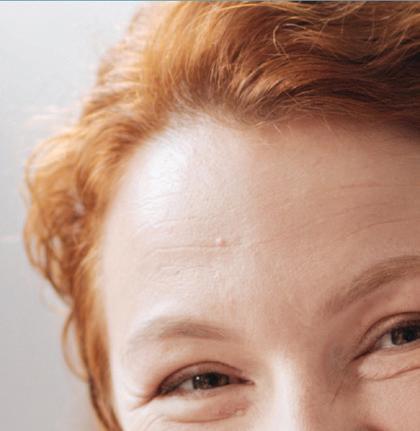
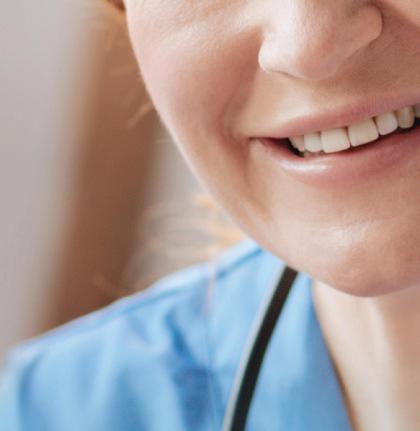












































By GreG hulsey, FAche, cmpe
As a medical practice administrator, managing employee performance and behavior is a critical part of maintaining a productive and legally compliant workplace. One tool for addressing employee issues is a progressive discipline policy. This approach not only helps improve employee engagement but also provides legal protection for your practice when termination becomes necessary.
Why Use Progressive Discipline?
Progressive discipline is a stepwise process designed to address employee performance or behavioral issues constructively. It allows employees the opportunity to correct their actions while ensuring that disciplinary measures are fair, consistent, and well-documented. Here’s why it’s indispensable for medical practices:
1. Enhancing Employee Engagement
• Opportunities for Improvement: Employees are given clear feedback and the chance to rectify their mistakes, fostering accountability and growth.
• Consistency and Fairness: By applying the same policies to all
employees, progressive discipline reduces perceptions of favoritism and promotes trust.
• Improved Morale: Employees feel secure knowing that mistakes will be addressed constructively rather than punitively.
2. Legal Protection
• Defensible Terminations: A documented progressive discipline process demonstrates fairness and consistency, reducing the risk of wrongful termination claims.
• Unemployment Claims: Proper documentation of warnings and efforts to address issues can protect the practice from unfavorable unemployment rulings.
• Compliance with Employment Laws: Adhering to a structured process ensures compliance with federal and state labor laws, safeguarding your practice from legal disputes.
in a Progressive Discipline Policy
Implementing a progressive discipline policy involves clearly defined steps that escalate in severity if the issue persists. Below is an outline of the common stages:
1. Counseling and Verbal Warning
• Purpose: To address the issue informally and clarify expectations.
• Process: The supervisor discusses the problem with the employee, explains its impact, and outlines corrective actions. This conversation should be documented for future reference.
2. Written Warning
• Purpose: To formally document ongoing issues if verbal warnings are not effective.
• Process: A written notice details the specific problems, previous discussions, expectations for improvement, and potential consequences if the behavior continues. This document becomes part of the employee’s personnel file.
3. Suspension or Probation
• Purpose: To emphasize the seriousness of the issue by temporarily removing the employee from their duties or placing them under close supervision.
• Process: The terms of suspension or probation should be clearly communicated in writing, specifying what improvements are needed during this period.
4. Termination
• Purpose: To end employment when all prior steps have failed to resolve the issue or if the offense is severe enough to bypass earlier steps.
• Process: Review all documentation to ensure compliance with policies and consult legal counsel or HR professionals before proceeding with termination.
Best Practices In Progressive Discipline
• Document Everything: Maintain detailed records of all disciplinary actions, including verbal warnings, to protect against potential legal challenges.
• Tailor Policies to Your Practice: Ensure your progressive discipline policy aligns with federal and state labor laws and is outlined in your employee handbook.
• Train Supervisors: Equip managers with training on how to implement progressive discipline consistently and effectively.
• Consult HR or Legal Experts: Seek guidance when dealing with complex cases to avoid missteps that could lead to lawsuits.

When physicians, scientists and researchers with extraordinary talent and passion are given the technology, the facilities, and the support, they achieve great things. The discoveries, innovations and clinical trials happening today will help shape the future of treatments and lead to cures.

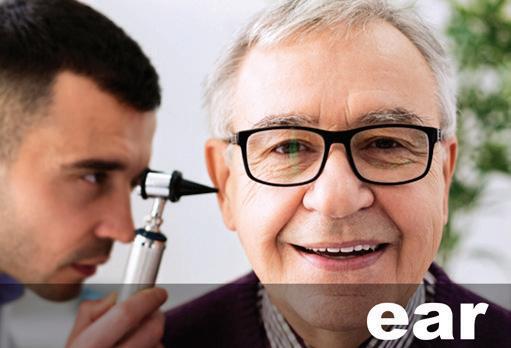


If you suffer from allergies or other ear, nose, throat or hearing problems, we don’t want you to treat your healthcare lightly or ignore symptoms that could lead to more serious issues. Call us now for a complete evaluation with one of our 15 board certified physicians, 5 highly trained and licensed PAs, or 18 clinical audiologists — all available to serve your needs at any of our 11 locations.


By clAy BArnett
Nestled in Eastaboga, Alabama, Rainbow Omega, Inc. is dedicated to enriching the lives of adults with intellectual and developmental disabilities (IDD). Founded in 1991 by Stentson and Dianne Carpenter, the organization began as a personal mission to provide an environment where their son —and other individuals with special needs —could thrive independently with dignity and purpose.
Today, Rainbow Omega operates on a beautiful campus along Interstate 20 that includes residential living facilities, a day program, and vocational opportunities that allow residents to lead active, healthier, and more meaningful lives. Rainbow Omega’s vocational program is a cornerstone of its success. Residents participate in real-world job training and employment through partnerships with companies like Honda Manufacturing, Neptune Technology Group, and Douglas/Rulmeca Group. Tasks range from assembling vehicle owner manual kits to working with water meter components to assembling machine parts —work that builds confidence and reinforces the dignity of labor.
The Rainbow Omega residents are excited about the commercial greenhouses,
which grow a variety of plants that are sold to the public at the on-site Garden Center and Gift Shop, and also to area garden centers and nurseries.
But even in such a supportive environment, health and fitness can still be a challenge. According to the National Institutes of Health, only nine percent of adults with intellectual disabilities achieve the recommended physical activity guidelines. While many adults with IDD express a desire to exercise, they often lack the resources, support, or structured programs to do so consistently.
Recognizing this gap, Rainbow Omega’s Family & Friends Support Council (FSC) launched a transformative Adaptive Fitness Program. Made possible by FSC-led fundraising efforts, the program allowed Rainbow Omega to hire two certified professionals to design and lead specialized fitness routines tailored to the unique needs of their residents. This program is already making a significant impact by improving physical health, as well as boosting mood, energy levels, and social engagement.
They are so eager to learn from you.” The environment is one of mutual learning, joy, and growth—values that continue to attract dedicated individuals to the mission.



By erikA roBerts
Open any mainstream internet news source and you will see articles highlighting celebrities in their golden years who seemingly have discovered the fountain of youth (or rather possess deep pockets and an excellent plastic surgeon). Some might call it vanity, but for a professional entertainer, appearance is part of the job. In this closed claim, we explore a case involving an entertainer who sought a non-invasive cosmetic procedure, known as SculpSure, to maintain her appearance. While the cosmetic procedure left her with a burn, months of recovery, and lasting damage, this article underscores the importance of patient selection, informed consent, careful technique, and post-procedure vigilance, even in seemingly low-risk aesthetic treatments.
Mrs. Kelley, a 71-year-old female, sought the care of a cosmetic surgeon, Dr. Haven, for SculpSure laser treatment on her flanks and abdomen. Mrs. Kelley worked as a singer and entertainer, routinely performing in jazz clubs and on cruise ships. Mrs. Kelley had a history of fibromyalgia, herpes simplex 1 or 2, and

Erika Roberts
was taking Acyclovir, Prednisone, and blood pressure medicine. Mrs. Kelley had undergone other cosmetic procedures before, and she wanted to tighten and firm the skin on her flanks and abdomen. According to Dr. Haven’s website, this laser treatment reduced fat and targeted areas of the body without damaging the skin and required only minimal recovery time. According to SculpSure’s website2, the

machine uses lasers to heat and destroy fat cells, which are then naturally eliminated by the body. Mild side effects can include temporary tenderness, swelling, or tissue firmness in the treatment area. Mrs. Kelley came to the initial consultation requesting the procedure specifically after researching the procedure on the internet. Mrs. Kelley and Dr. Haven discussed other alternatives to the SculpSure procedure, but Mrs. Kelley was adamant that she wanted to move forward specifically with the SculpSure treatment.
SculpSure utilizes flat, plate-like applicators that are placed on the skin to deliver laser energy for fat reduction. As the procedure began, Dr. Haven moved the plates across Mrs. Kelley’s flanks. As the procedure progressed to her abdomen, Mrs. Kelley vocalized pain. When Dr. Haven removed the plates and examined the area, he acknowledged that it appeared that the plates had burned Mrs. Kelley’s abdomen and he took some pictures of the burn. Mr. Kelley, Mrs. Kelley’s husband, asked if she should go to the emergency room, but Dr. Haven reassured him that everything was fine. He treated the burn with nitric oxide and requested that Mrs. Kelley return to the
office the next day.
That night, Mrs. Kelley continued experiencing pain and contacted Dr. Haven to inquire about the need for immediate wound care or the application of an additional burn cream. However, Dr. Haven advised that neither was necessary. The next day, Mrs. Kelley returned to the dermatology office and received IV fluids with Phenergan and a CBC panel. Mrs. Kelley requested a CT scan, and Dr. Haven stated that it was unnecessary based on Mrs. Kelley’s bloodwork. After receiving the IV fluids, Mrs. Kelley reported feeling better. She was sent home and referred to a plastic surgeon the next day.
Later in the day, she went to the emergency room where she was administered IV antibiotics. The wound had begun blistering. She was instructed to visit a burn center the following day. Two days after the initial treatment, Mrs. Kelley saw a burn specialist and plastic surgeon, Dr. Maple, but did not go to the plastic surgeon that Dr. Haven referred her to. Dr. Maple determined that Mrs. Kelley had sustained third degree burns, stating that the injury “appeared to be an exit wound similar to a lightning strike.”
(CONTINUED ON PAGE 18)
and therefore, the DDS encourages





After three months of frequent office visits, in-office debridement procedures, and wound dressings, Mrs. Kelley was discharged. At that time, Mrs. Kelley no longer had a visible belly button, and she claimed that her abdomen was permanently disfigured in an area that she had originally sought to enhance through the SculpSure procedure. She also complained that she continued to suffer pain and discomfort in her abdomen.
Mrs. Kelley and her husband sought legal counsel, and their attorney contacted Dr. Haven. Dr. Haven reported the matter to SVMIC, and defense counsel was obtained for Dr. Haven. Through Mr. and Mrs. Kelley’s attorney, they submitted a presuit demand for Mrs. Kelley’s past and future medical expenses, including the cost of corrective surgery, as well as compensation for pain, suffering, emotional distress, and loss and enjoyment of life associated with the permanent disfigurement. Mrs. Kelley also alleged that she had developed an umbilical hernia related to the burn and would require additional surgery. Mr. Kelley submitted a claim for loss of consortium.
Counsel for Mr. and Mrs. Kelley obtained an expert review from another cosmetic surgeon. This surgeon opined that Dr. Haven negligently administered the treatment by positioning the device directly over Mrs. Kelley’s belly button, causing the laser to penetrate her skin and resulting in third-degree burns. There was also some concern that the patient was taking Prednisone before the procedure, which can lead to heightened sensitivity during the procedure.
Defense counsel also obtained early expert review. Though Dr. Haven conceded that he had burned the patient, defense expert physicians agreed that the subsequent care was appropriate, and that the umbilical surgery was not related

to the burn and its subsequent treatment. Early demands for resolution were unreasonable, with Mrs. Kelley also claiming that she would require a full abdominoplasty. Ultimately, however, Mr. and Mrs. Kelley’s expectations became more reasonable. Counsel for both parties engaged in negotiations and ultimately resolved the matter before a suit was filed.
“Non-Invasive” Doesn’t Mean “Risk-Free”:
Procedures marketed as non-invasive or low-risk can still result in significant complications. Providers must remain vigilant about proper technique, device calibration, and patient monitoring.
Patient Selection and Counseling Are Critical:
Understanding a patient’s medical history, skin type, and expectations, especially when appearance is tied to their profession, is essential. Thorough informed consent should include rare but serious risks such as burns.
Appearance-Motivated Patients May Have Heightened Expectations and Demands:
When a patient’s livelihood or identity is closely tied to their appearance, complications can have amplified emotional and financial consequences. This should be factored into risk discussions and documentation.
Documentation Is Crucial:
Detailed records of the consultation, consent process, and treatment parameters can be invaluable in de-
continued from page 17
fending against claims and lawsuits.
Early Resolution Can Be Strategic:
In cases where liability is uncertain, but the patient has suffered a visible injury with long-term effects, early resolution may be the most cost-effective and reputation-preserving path. This determination has to be made on a case-bycase basis depending upon the particular facts and circumstances.
Know When to Refer:
Prompt referral to a burn center or specialist can mitigate long-term damage and demonstrate appropriate standard of care, which may reduce liability exposure. This case serves as a sobering reminder that even procedures marketed as “minimally invasive” can carry very real risks, especially when patient expectations are high and outcomes are deeply personal. For providers, it’s a call to balance optimism with caution, marketing with medicine, and aesthetics with ethics. As the demand for cosmetic procedures continues to grow, so too must our commitment to patient safety, transparency, and timely intervention when complications arise. In the end, the true measure of care lies not just in the promise of youth and beauty, but in the protection of trust.
Erika Roberts is a Claims Attorney at SVMIC. She obtained her undergraduate degree from Lipscomb University. She earned her Juris Doctor from the University of Tennessee College of Law. Prior to joining SVMIC, Roberts worked for the Tennessee Supreme Court and the Tennessee Court of Appeals and in private practice defending, in part, physicians and other medical providers in healthcare liability claims. She joined SVMIC in 2023.
(1) Names, some facts, and identifying details have been changed to protect the parties’ privacy.
(2) www.cynosure.com/product/sculpsure/, last verified on July 2, 2025.
continued from page 15
Conclusion

A wellimplemented progressive discipline policy is more than just a disciplinary tool; it’s an investment in your practice’s culture, productivity, and legal security. By fostering accountability and providing employees with opportunities for improvement, you can create a more engaged workforce while protecting your practice from potential legal risks. For medical practices navigating complex HR challenges, progressive discipline is not just important— it’s essential.
continued from page 16
As life-chang ing organizations like Rainbow Omega look to the future, their success is not only improving the quality of their residents’ lives, but their physical and mental health as well.


Through personalized care, meaningful work, and now, adaptive health initiatives, the organization continues to set a standard for what support for adults with IDD should look like.












Fundraising efforts are paramount for such a robust program - and you can join in with numerous opportunities for giving and support. Noteworthy events include the upcoming Nashville to Birmingham: Stories behind the Songs on August 8th 6 PM- 10 PM at the Fennec in Birmingham. For event information or to support Rainbow Omega’s mission in other ways, visit www.rainbowomega.org.


EDITOR
Steve Spencer
VICE PRESiDENT OF
Jason Irvin
CREATIVE DIRECTOR
Katy Barrett-Alley
CONTRIBUTING WRITERS
Jane Ehrhardt, Ashley Franco, Laura Freeman, Lynne Jeter, Marti Slay
Birmingham Medical News
270 Doug Baker Boulevard, Suite 700-400, 35242 205.215.7110
AD SALES: Jason Irvin, 205.249.7244
All editorial submissions should be e-mailed to: editor@birminghammedicalnews.com
Huntsville Hospital wants to build two new free-standing emergency departments in Hampton Cove and north Huntsville. In addition to these two new buildings, the existing emergency department at Madison Hospital will grow by six beds, increasing capacity by 25 per-
cent. The hospital has submitted a letter of intent to the State of Alabama and will formally apply for a Certificate of Need later this summer
“We hope to fast-track these projects upon approval,” said Jeff Samz, CEO of Huntsville Hospital Health Systems.
“Our plan would be to complete the design this winter and begin construction of the FEDs in the spring of 2026.”
The investment in each free-standing emergency department is estimated to be $30 million.
Baptist Health has rebranded its physician practices group, including over 60 practices and 170 providers, to Baptist Health Medical Group.
"We are delighted to launch the Baptist Health Medical Group
brand," said Thibaut van Marcke, president of Baptist Health. "The rebrand will help increase recognition of our physicians in the communities we serve and enhance the reach of the Baptist Health name."
Laura Grill, CEO of East Alabama Health, has been included on the 2025 “Women Hospital Presidents and CEOs to Know” list as released by Becker’s Hospital Review.

As CEO, Grill has led the organization through major milestones, and facility expansions. East Alabama Health has opened the Spencer Cancer Center and Auburn Medical Pavilion, launched construction on a new center for mental health, began a $43 million critical care expansion at East Alabama Medical Center, and earned national recognition for clinical excellence in stroke, robotic surgery and diabetes care.
Grill was also appointed by Gov. Kay Ivey to the board of the new Alabama School of Healthcare Sciences. She recently completed a one-year term as chair of the Alabama Hospital Association and currently serves on several other state and regional boards.
As part of the brand launch, updated signage will be installed across Baptist Health locations to reflect the new name.
The American Heart Association has named Andre McShan, MD as the president of the Southeast Board of Directors for the 2025-2026 fiscal year.
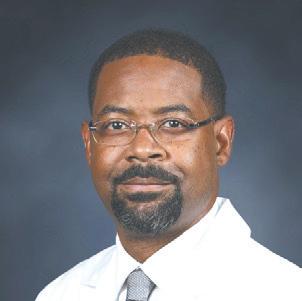
MD
McShan is an assistant professor in the Department of Physical Medicine and Rehabilitation at UAB, Medical Director at The Workplace at UAB Highlands, and is Co-Medical Director of UAB Employee Health. He is a former member of the Association’s National Workplace Health Steering Committee and past president of the Birmingham Metro Board.
birminghammedicalnews.com







